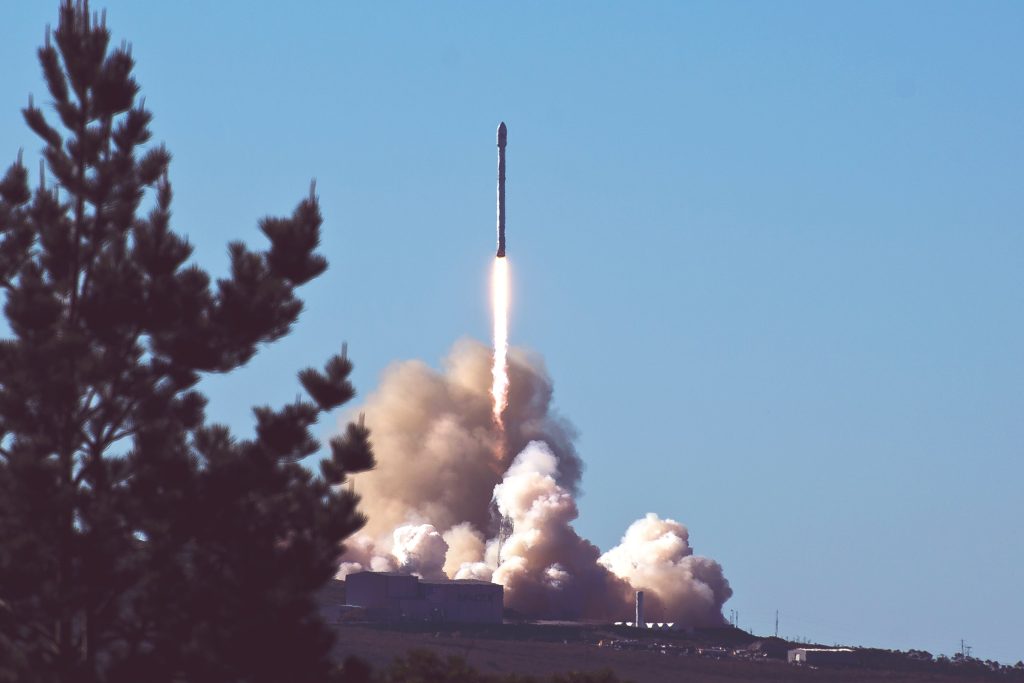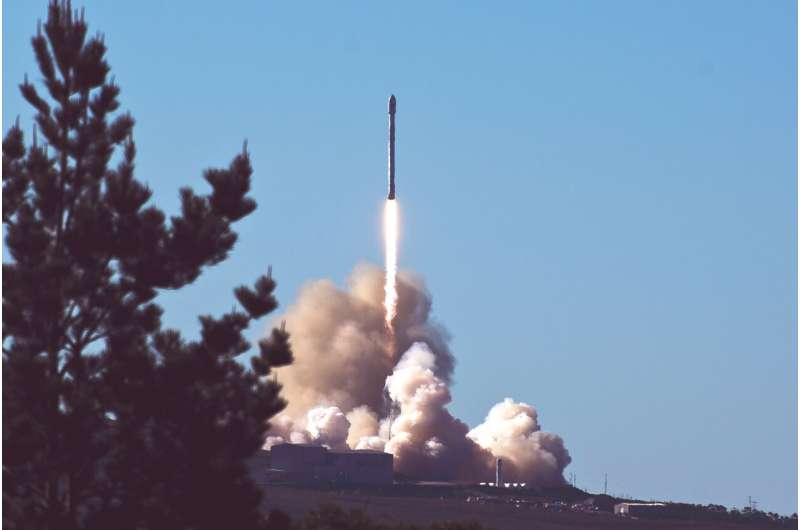
NZ’s Space Agency is both regulator and developer of the aerospace industry—that’s a point of tension, say researchers (Image Credit: Phys.org)

Like the global space industry, which aims to reach a value of US$1.8 trillion by 2035, New Zealand’s aerospace sector is growing rapidly.
But as our latest research shows, it is falling short on addressing urgent sustainability issues because of a perception this would incur short-term costs and slow growth.
Many countries are prioritizing the development of national space strategies. Usually, these include plans to increase access to venture capital, grow a specialist workforce and develop flexible regulations and sovereign defense capabilities.
But sustainability leadership in space is crucial, given rising concerns over space debris, and emerging issues such as ozone depletion from rocket launches and the accumulation of alumina and soot particles in Earth’s atmosphere as re-entering objects burn up.
The politics of growth
New Zealand’s aerospace regulatory system was catalyzed by Rocket Lab U.S.’s commercial decision to launch rockets from a spaceport on the Māhia peninsula.
This was followed by the establishment of New Zealand’s Space Agency. This small unit of the Ministry of Business, Innovation and Employment (MBIE) regulates launch payloads and fosters business development by facilitating access to funding for commercial ventures and scientific research.
A central component of New Zealand’s commercial aerospace activity is a bilateral agreement with the US. This enables the launch of American payloads aboard Rocket Lab’s Electron vehicle, negotiated in part by the Space Agency.
MBIE targets an annual revenue of NZ$10 billion by 2030. This is in alignment with New Zealand’s 2023 aerospace strategy and national space policy, and is supported by the appointment of New Zealand’s first cabinet minister for space.
But our study suggests the Space Agency’s dual role as regulator and sector developer introduces a conflict of interest between promoting sustainability and fostering economic growth. This tension is exacerbated by current budget constraints which place too high a demand on the agency’s resources to fulfill both commitments.
The government is simultaneously a customer, investor and regulator of the sector. Yet, it is being relied upon for leadership in sustainability.
Expectations versus reality
Companies are looking to the government for incentives to prioritize sustainability, such as monitoring emissions and pollutants from launches.
The Space Agency has progressed a space debris removal policy, but some say this is not proactive enough. Already, more than 80% of the objects in Earth’s orbits are junk.
The policy does not keep pace with the growing number of market entrants, which will generate a larger environmental footprint on and off Earth.
Minister for Space Judith Collins says her office works with the Ministry for the Environment, the Environmental Protection Authority and industry representatives such as Rocket Lab to “ensure that potential harms to the environment are monitored and mitigated.”
However, this commitment lacks quantifiable details and is not reported in any government documentation. This creates a vacuum where no party (government, industry or the public) assumes responsibility for sustainability.
A sustainability leadership vacuum
The absence of sustainability leadership allows nations with “soft” power, such as the US, to set the rules through the control of resources and norms, such as the renewed goal to head back to the moon.
To navigate this challenge, we need leadership through international cooperation as well as a robust domestic approach to encouraging and rewarding sustainability initiatives.
Recent initiatives, including small prizes and seed funding for feasibility studies, along with efforts to streamline regulatory approvals, have been announced to aid the growth of the sector.
However, while there is a strong push for accelerated growth, the documents lack clarity on the investment required to sustain business development.
Unlike other countries where government co-financing often plays a crucial role in advancing space-related technologies, New Zealand’s approach to financial support—whether through grants, loans, tax incentives or employment regulations—remains poorly defined.
While the national space policy document cites sustainability values, it falls short of outlining specific approaches or initiatives. Notably, it lacks a clear working definition of sustainability.
The need for clarity and balance
As the aerospace sector grows—amid the uncertainties of climate change, rapid technological developments and continued American influence—we need to clarify the relationship between public and private actors.
Specifically, we need clear guidelines on who is responsible for balancing growth and regulation with environmental and social impacts of industrial activities.
The aerospace sector could benefit from looking to other economically-driven industries that willingly participate in sustainability initiatives, such as the Sustainable Business Network and the B Corp movement.
This approach would address space sustainability concerns in a more balanced manner, as opposed to the growth-driven mindset that often disregards sustainable development.
By shifting the mindset, we can pave the way for a more responsible and forward-thinking aerospace sector.
Provided by
The Conversation
This article is republished from The Conversation under a Creative Commons license. Read the original article.
NZ’s Space Agency is both regulator and developer of the aerospace industry—that’s a point of tension, say researchers (2024, August 30)
retrieved 31 August 2024
from https://phys.org/news/2024-08-nz-space-agency-aerospace-industry.html
part may be reproduced without the written permission. The content is provided for information purposes only.








